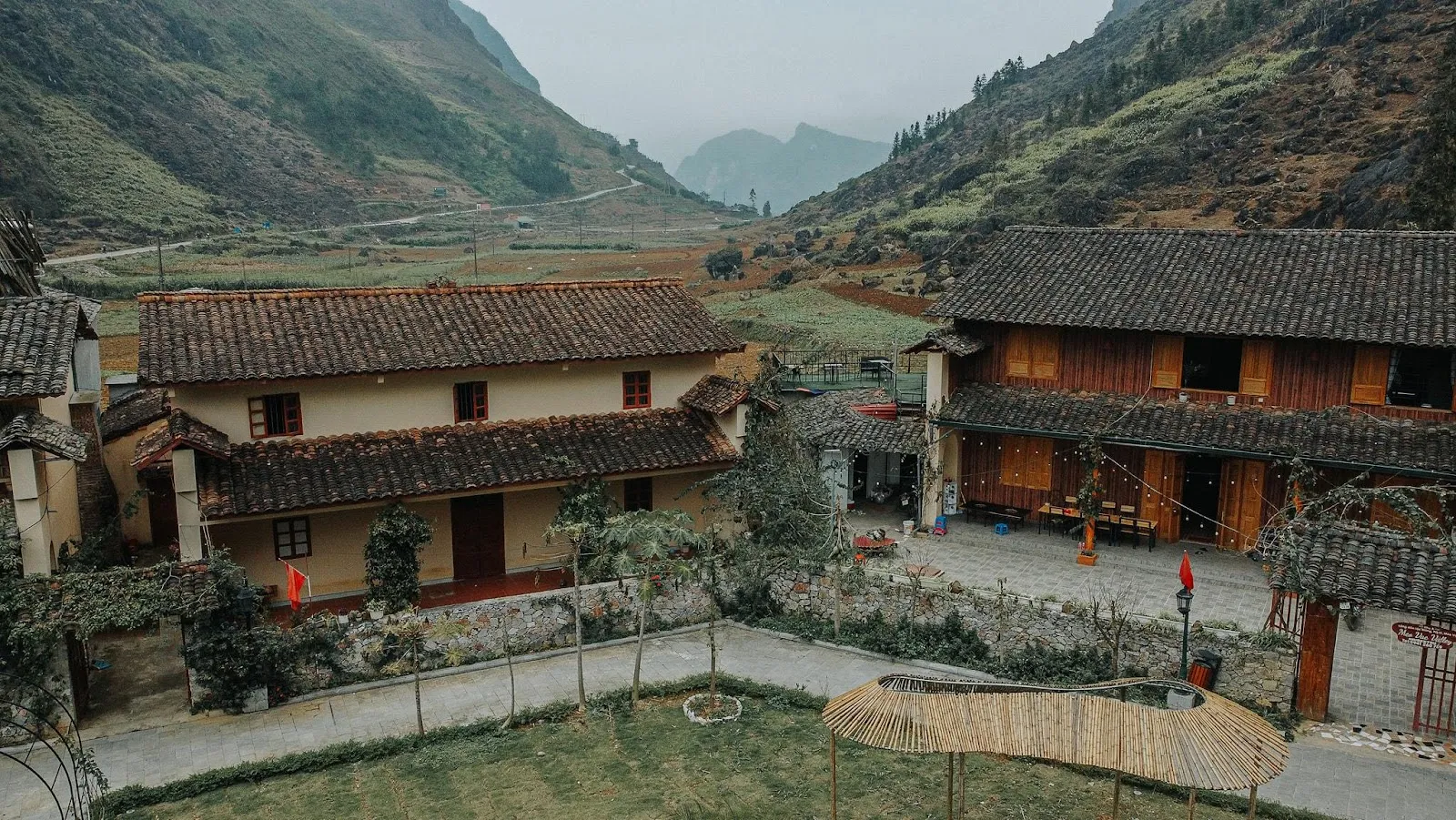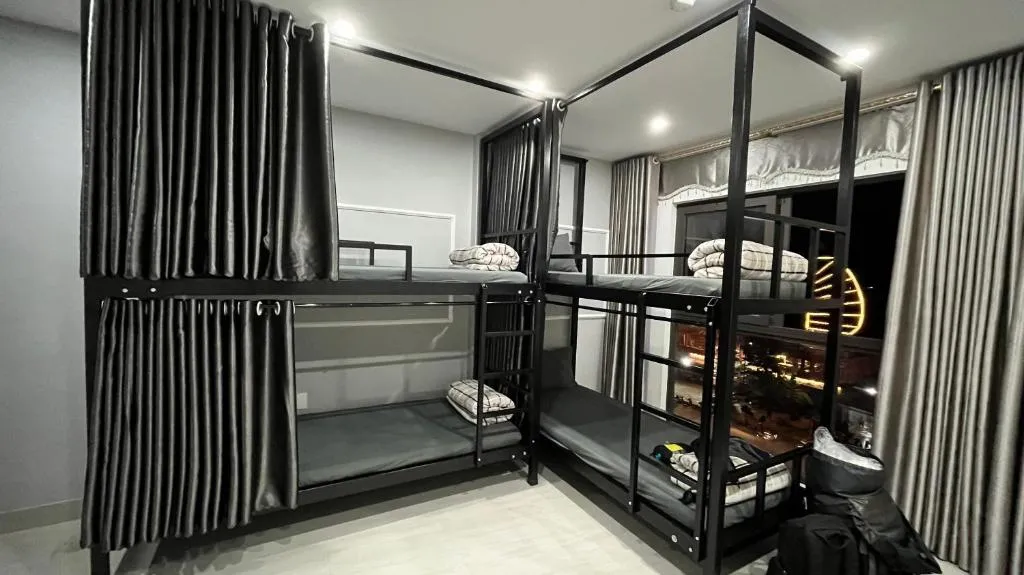Planning a trip to the Ha Giang Loop? Understanding the Ha Giang Loop costs is crucial for budgeting your adventure effectively. The Ha Giang Loop, known for its stunning landscapes and cultural richness, requires careful financial planning to ensure a smooth journey. In this guide, Karst Plateau will break down the essential expenses you’ll encounter, including transportation, accommodation, food, and activities. By preparing in advance, you can fully enjoy the breathtaking views and unique experiences that the Ha Giang Loop offers, without any financial surprises.
1. Transportation Costs
1.1 Getting to Ha Giang

Costing between 150,000 VND to 300,000 VND ($6.50 to $13 USD) per person one-way
Nestled in Vietnam’s northernmost region, Ha Giang is renowned for its breathtaking landscapes. Before setting out on the Ha Giang Loop, understanding Ha Giang Loop’s costs is essential, starting with transportation.
Travelers often choose buses from Hanoi to Ha Giang, costing between 150,000 VND to 300,000 VND ($6.50 to $13 USD) per person one-way. This economical option offers a comfortable journey with air-conditioned sleeper buses, making it a budget-friendly choice for managing Ha Giang Loop costs effectively. Companies like Bang Phan and Quang Nghi are popular for their reliability.
Alternatively, for added comfort or group travel, hiring a private car or van ranges from 1,500,000 VND to 2,500,000 VND ($65 to $110 USD) one-way. While pricier, this option provides flexibility and a more personalized experience, aligning with those looking to manage their Ha Giang Loop costs with greater convenience.
| See more: How to move from Hanoi to Ha Giang? |
1.2 Transportation Options within the Loop

Popular models like the Honda XR 150cc are ideal for the rugged terrain
Once in Ha Giang, the adventure truly begins. To manage your Ha Giang Loop costs, renting a motorbike is the best way to explore. Renting a semi-automatic or manual motorbike typically costs 150,000 VND to 200,000 VND per day ($6.50 to $8.50 USD). Popular models like the Honda XR 150cc are ideal for the rugged terrain.
For those who prefer a more structured experience, guided tours range from $130 to $330 USD, including transportation, accommodation, meals, and a guide. This all-inclusive option offers convenience and a detailed itinerary.
Alternatively, hiring a private car or van with a driver costs about $30 to $50 USD per day. This choice provides maximum comfort and ease, perfect for families or groups. By considering these Ha Giang Loop costs, you can tailor your travel experience to your preferences and budget.
2. Accommodation Costs
2.1 Homestays

Homestays in Ha Giang offer an authentic slice of local culture and hospitality
When it comes to perfecting your Ha Giang experience, accommodations play a vital role. Homestays in Ha Giang offer an authentic slice of local culture and hospitality. These venues are often run by ethnic minority families, providing travelers not just with shelter, but also with rich cultural exchanges.
The cost of staying in a homestay ranges from 375,000 VND per night for a private room (couple) to 550,000 VND per night for a family room. Accommodations can vary from rustic clay houses and stilt houses to those built from natural mountain stones.
2.2 Hotels
Hotels in Ha Giang cater to varying budgets and preferences. Although specific prices aren’t always readily available, it’s mentioned that homestays often offer higher comfort levels compared to hotels in urban settings.
Expectedly, the hotel rates would consequently range slightly higher, likely averaging around 500,000 to 1,200,000 VND per night ($21 to $51 USD), depending on the level of facilities and services. Such accommodations provide more modern conveniences like private bathrooms, WiFi, and sometimes luxury amenities like pools and spas. It’s the difference between staying in a cozy family home versus a business-class hotel – both valuable but catering to different preferences.
2.3 Guesthouses
For the budget-conscious traveler, guesthouses become a haven. These establishments generally cost between $13 to $20 USD per night. They offer basic amenities like a comfortable bed, private or shared bathrooms, and occasionally a small restaurant or café.
Guesthouses and hostels are ubiquitously dispersed around the Ha Giang Loop, providing both easy accessibility and economical options for adventurers. Though the comforts may be basic, these lodgings often include amiable interactions with other travelers, akin to staying at a campsite or an adventure motel.
2.4 Hostels

Prices for hostels along the Ha Giang Loop hover around $7 to $15 USD per night
Hostels embed a sense of community among travelers and are another budget-friendly alternative when considering Ha Giang Loop costs. Prices for hostels along the Ha Giang Loop hover around $7 to $15 USD per night.
A clear highlight of these hostels is the social atmosphere they offer, featuring communal areas and group activities that often become the hotbed for new friendships and shared travel stories. While the quality can vary, the cozy and engaging atmosphere typically more than compensates for the more modest amenities. For those managing their Ha Giang Loop costs, opting for hostels can be a cost-effective choice that also enriches the travel experience.
3. Food Costs

A Banh Mi (Vietnamese sandwich) costs around 25,000-40,000 VND ($1 – $1.70 USD)
One of the exquisite pleasures of traveling through Ha Giang is its diverse culinary offerings. To accurately budget for your trip, understanding Ha Giang Loop costs for food is crucial.
A Banh Mi (Vietnamese sandwich) costs around 25,000-40,000 VND ($1 – $1.70 USD). Traditional noodle or rice dishes range from 30,000-80,000 VND ($1.30 – $3.50 USD), offering great value. For a more upscale dining experience, expect to pay 100,000-220,000 VND ($4.30 – $9.50 USD) for fancier dishes, and Western meals can range from 100,000 to 300,000 VND ($4.30 – $13 USD).
Beverages are also affordable, with a 2L bottle of water costing around 20,000-30,000 VND ($0.85 – $1.30 USD), smoothies and coffee ranging from 40,000-60,000 VND ($1.70 – $2.60 USD) and 25,000-60,000 VND ($1.10 – $2.60 USD), respectively.
Overall, budget around $20 – $40 per day for food and drinks on the Ha Giang Loop. With options from street stalls to mid-range restaurants, you can enjoy diverse and delicious meals while managing your Ha Giang Loop costs effectively.
4. Tourist Attraction Fees
4.1 Entrance Fees to Scenic Spots

Many scenic spots in Ha Giang have entrance fees
Embarking on the Ha Giang Loop isn’t merely about the journey, but the awe-inspiring destinations you encounter along the way. However, many of these scenic spots come with their entrance fees. Typically, tourists must shell out around $5 – $10 USD per person to access certain sites and activities. For instance, the Dong Van Karst Plateau, a notable UNESCO-listed geopark, charges these marginal fees which are often reinvested into conservation efforts.
Besides this, attractions like the Ma Pi Leng Pass and Lung Cu Flagpole require entry tickets that fall within the same price bracket. This small price to pay not only preserves these cultural and natural landmarks but also enhances the visitor experience through better infrastructure and maintenance.
4.2 Cultural Experiences

A cultural tour may include guided visits to local markets, handicraft villages, and historical landmarks
The cultural immersion afforded by the Ha Giang Loop is unrivaled. Taking part in these enriching activities, such as ethnic minority village tours or traditional music and dance performances, typically involves additional fees. These costs often range from 5 USD to 20 USD per person. Here, you get the chance to engage with the local communities, gaining insight into their daily lives, rituals, and customs which otherwise remain a mystery to many.
A cultural tour may include guided visits to local markets, handicraft villages, and historical landmarks. Such experiences often provide invaluable learning and memorability.
5. Other Costs
5.1 Fuel

The fuel expenses will also rise in correlation with the type of vehicle and the duration of your journey
Any road-warrior embarking on the Ha Giang Loop must factor in fuel costs as part of their Ha Giang Loop costs. Renting a semi-automatic motorbike typically costs around 180,000 VND per day (about $7.56 USD). For a 4-day trip, the total rental fee would be approximately 720,000 VND ($30.24 USD). This rental cost is a significant part of your overall Ha Giang Loop costs.
For those opting for more advanced models like the automatic scooter or the Honda XR 150cc, the rental costs increase to around 550,000 VND per day ($23.10 USD). The fuel expenses will also rise in correlation with the type of vehicle and the duration of your journey. Typically, fuel costs are reasonably affordable, averaging around 100,000 VND ($4.30 USD) per day, which should be factored into your Ha Giang Loop costs alongside the initial rental costs.
Understanding these Ha Giang Loop costs for vehicle rental and fuel is crucial for effective budgeting, ensuring you are well-prepared for the financial aspects of your adventure.
5.2 Permits
Although most travelers to Ha Giang do not need a visa for stays under 15 days, those planning a longer visit must factor in visa costs. Depending on your nationality, visa fees can range from $20 to $50 USD, impacting your Ha Giang Loop costs.
Additionally, permits for accessing remote areas cost around 100,000 – 200,000 VND ($4.30 – $8.50 USD). These additional Ha Giang Loop costs should be included in your pre-trip planning.
6. Budgeting Tips
6.1 Avoiding Tourist Traps
When it comes to Ha Giang Loop costs, awareness of potential tourist traps is essential. Over-priced attractions, eateries, or tours can quickly drain your budget. To manage your Ha Giang Loop costs effectively, opt for local vendors and explore lesser-known sites. This approach helps you get the most authentic experiences at more reasonable costs, ensuring that your Ha Giang Loop trip remains within budget while offering genuine local interactions.
6.2 Haggling

Always be polite and respectful while haggling
Haggling is almost an art in Vietnam, and the Ha Giang Loop costs are no exception. Negotiating prices is expected in marketplaces, motorbike rentals, and even certain accommodations along the Ha Giang Loop. When it comes to Ha Giang Loop costs, always be polite and respectful while haggling, but don’t be afraid to stand your ground to ensure you’re getting a fair deal. Approach it with a cheerful demeanor; locals often appreciate the engagement and might even offer a sweeter deal on your Ha Giang Loop costs. This practice can help you manage your overall Ha Giang Loop costs more effectively.
7. Estimated Ha Giang Loop costs for a 4-day trip
Estimated Breakdown
| Categories | Approximate Cost (VND) | Approximate Cost (USD) |
|---|---|---|
| Transportation (Round Trip from Hanoi) | 600,000 – 1,200,000 VND | $26 – $52 USD |
| Motorbike Rental | 720,000 – 2,200,000 VND | $30 – $93 USD |
| Accommodation | 1,500,000 – 3,200,000 VND | $65 – $138 USD |
| Food | 1,800,000 – 3,600,000 VND | $78 – $156 USD |
| Entrance Fees | 450,000 – 900,000 VND | $20 – $40 USD |
| Miscellaneous | 600,000 – 1,200,000 VND | $26 – $52 USD |
| Total Estimated Costs | 5,800,000 – 12,300,000 VND | $245 – $531 USD |
These approximations account for a 4-day jaunt around the Ha Giang Loop, incorporating varied accommodation types, dining experiences, and contingencies for unforeseen expenses.
Understanding the Ha Giang Loop costs and planning your budget accordingly is essential for a successful trip to the Ha Giang Loop. By considering transportation, accommodation, food, and other expenses, you can ensure a memorable adventure through one of Vietnam’s most scenic regions. For more detailed information and travel tips, visit our website at Karst Plateau. Wish you happy travels!














